The Mobile Sausage Factory (prototype) visited Hyllie at the Finissage together with sound artist Dr. Flora Könemann (Berlin) who invited visitors and participants to listen to the sounds of sausage making.
Author Archives: Marek
Transplant at sunset
And we others are simply food that has been released for a while.

Tree Diagrams
Spirit of the Beehive : documentation
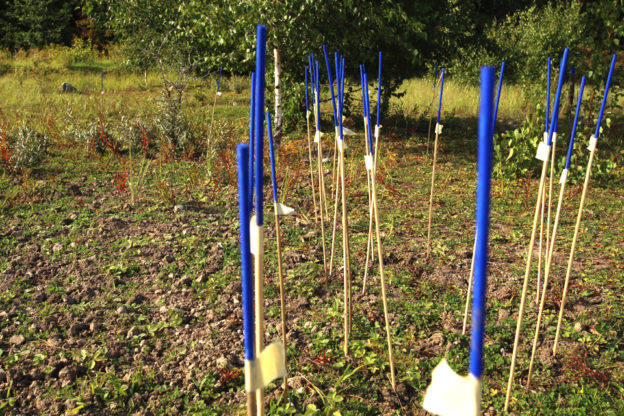
More thoughts
More thoughts on Vague Meadow in the blog: www.700dandelions.bjornwangen.se/uncategorized/more-thoughts-on-vague-meadow/
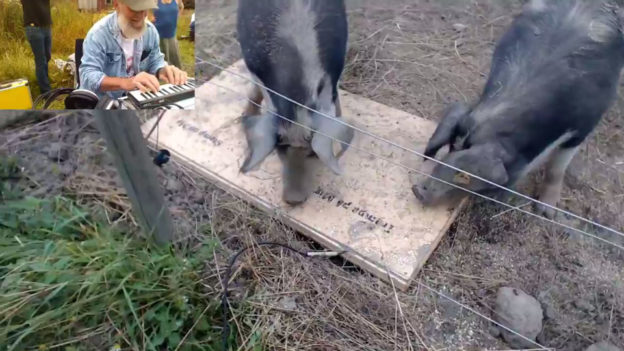
Pigs and Man..
Some images

The last two weeks I’ve added 90 plants.
www.700dandelions.bjornwangen.se/
human-manure
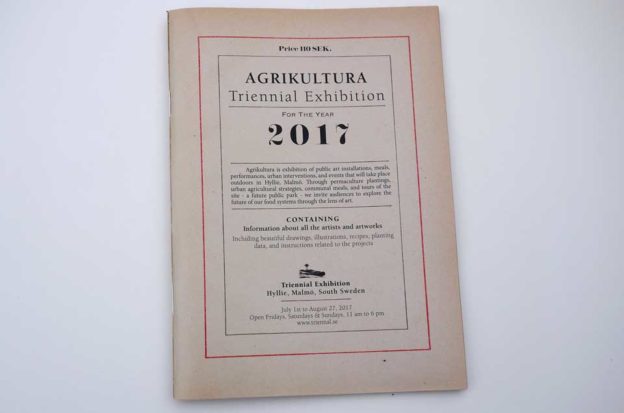
Catalog
[wp_cart_display_product name=”Agrikultura Catalog” price=”13.00″ shipping=”5″ thumbnail=”https://agrikultura.triennal.se/wp-content/uploads/2017/07/book-140×93.jpg” description=”The catalog for the exhibition” shipping=”2.50″]
[wp_cart_display_product name=”Catalog Package” price=”26.00″ shipping=”2.50″ thumbnail=”https://agrikultura.triennal.se/wp-content/uploads/2017/07/book-3-140×93.jpg” description=”We also sell online the complete package which includes the catalog, a seed cover, 9 postcards and bag.” ]
[show_wp_shopping_cart]
Chart of Perennial Edibles at Cluster
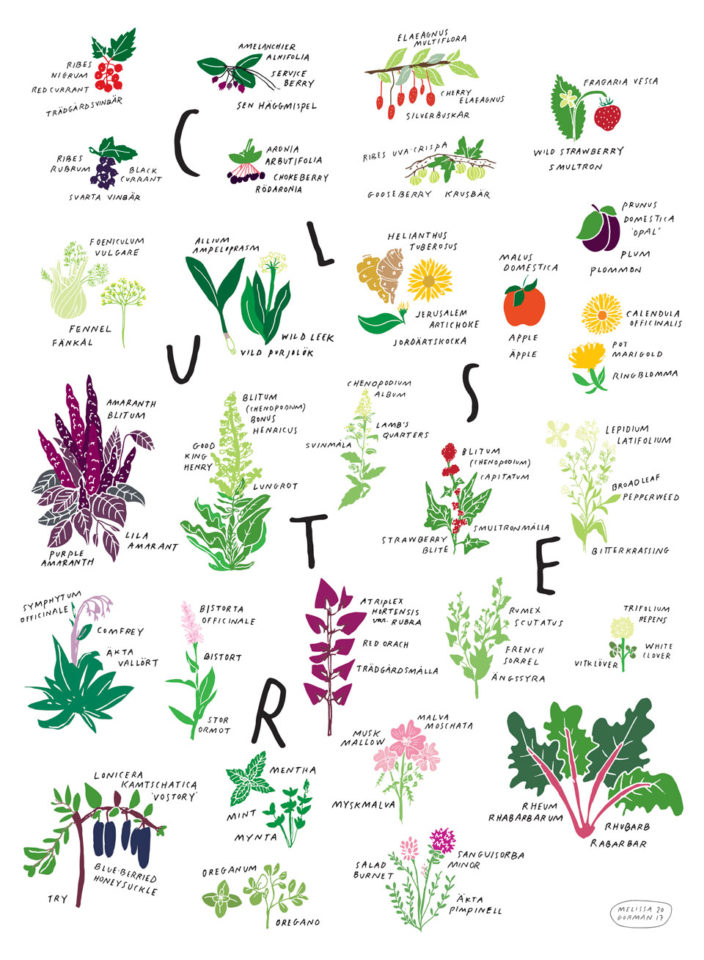
Maps and Charts are in collaboration with Melissa Gorman.
Testing nature’s edible resources at Hyllie
Testing nature’s edible resources at Hyllie for Wasteland Encyclopaedia. Soup is made from 100% local wild plants and mushrooms.
We made vegetable stock from Daucus carotus (vildmorot, Queen Anne’s Lace) – root, leaves and flowers
and Pastinaca sativa (vild palsternacka, wild parsnip) – root, leaves and flowers.
We strained all wild vegetables from stock as they were too woody to eat.
Then we added to the boiling soup chopped young leaves of Tussilago farfara (hästhov, coltsfoot)
and fried mushrooms, Lycoperdon perlatum (vårtig röksvamp, warted puffball).
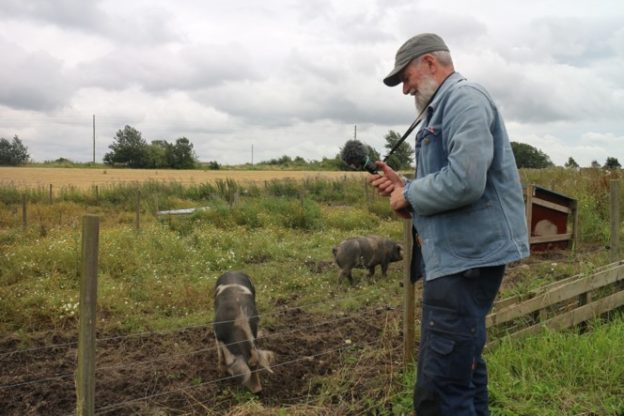
News for Pigs and Man
 I met my new girlfriends Gullig and Grynhilde.
I met my new girlfriends Gullig and Grynhilde.
Hopefully they will join to make a sound art performance at Holstenhof in Vollsjö in the near future.
We need a good day without rain.
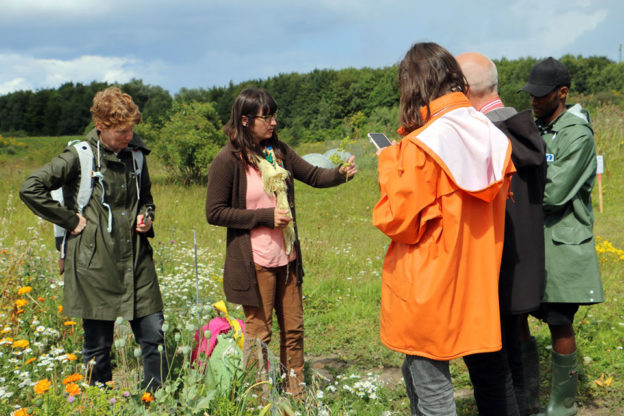
Inventory of plants at Agrikultura
Plant Inventory at Agrikultura
Hyllie, Malmo, Sweden
August 3, 2017
Alismataceae, water plantain family
Alisma plantago-aquatica, European water plantain, svalting
Amaranthaceae
Amaranthus blitum, purple amaranth, lila amarant
Atriplex hortensis var. rubra, red orach, Trädgårdsmålla
Beta vulgaris ssp. vulagris, chard, Mangold
Blitum (Chenopodium) bonus henricus, Good King Henry, Lungrot
Blitum (Chenopodium) capitatum, Strawberry goosefoot, smultronmålla
Chenopodium album, lamb’s quarters, svinmåla
Spinacia oleracea, spinach, spenat
Amaryllidaceae, amaryllis family
Allioideae, onion tribe
Allium ampeloprasm, wild leek, Vild purjolök
Allium sativum, garlic vitlök
Allium cepa, onion, lök
Anacardiaceae, sumac family
Rhus typhina, staghorn sumac, Rönnsumak
Apiaceae, parsley/carrot family
Angelica archangelica, ssp. litoralis, garden angelika, Strandkvanne,
Daucus carotus, Queen Anne’s Lace, vildmorot
Eryngium maritimum, sea holly, Vägtistel
Foeniculum vulgare, fennel, fänkål
Pastinaca sativa, Parsnip – Palsternacka
Asteraceae, Aster or sunflower family
Achillea millefolium, yarrow, röllika
Arctium lappa/minus, burdock, Stor/liten kardborre
Artemesia vulgaris, mugwort, Gråbo
Calendula officinalis, pot marigold, ringblomma, ringblomssläktet
Cichorium intybus, chickory, Cikoria eller vägvårda
Cirsium arvense, field thistle, Åkertistel
Cirsium vulgare, bull thistle, Vägtistel
Helianthus tuberosus, jerusalem artichoke, Jordärtskocka
Hypochaeris radicata, false dandelion, Hairy cat’s ear, rotfibbla
Lactuca sativa cv. , lettuce, sallad
Lactuca serriola, prickly lettuce, Rottfibbla
Senecio vulgaris/ Senecio jacobaea, groundsel/ragwort,
Sonchus sp., sow thistle, Molkar,
Tanacetum vulgare, tansy, Renfana
Taraxacum officinale, dandelion, Maskros
Taraxacum albidum, white dandelion, Vit Maskros
Tripleurospermum maritimum, false mayweed, Baldersbrå
Tussilago farfara, coltsfoot, Hästhov/Hästhovsört
Betulaceae, Birch family
Alnus glutinosa, alder, Klibbal
Betula pendula, birch, Vårtbjörk
Corylus avellana, hazelnut, Hassel
Boraginaceae, borage family
Borago officinalis, star flower, borage, Gurkört
Echium vulgare, Viper’s bugloss, blueweed, Blåeld
Phacelia tanacetifolia, Honungsört, lacy phacelia
Symphytum officale, comfrey, Äkta vallört
Brassicaceae, mustard family
Eruca sativa, arugula
Lepidium latifolium, broad-leaved pepperweed, Bitterkrassing
Raphanus raphanistrum subsp. sativus, radish, rädisa
Sisymbrium altissimum, Tumble Mustard, Hamnsenap
Caprifoliaceae, honeysuckle family
Dipsacus fullonum, wild teasel, Fuller’s teasel, Kardvädd
Lonicera kamtschatica ‘Vostory’, blue-berried honeysuckle, Try
Lonicera tatarica, Fagerty, Tatarian honeysuckle, Rosentry
Valleriana officinalis, Valerian – Läkevänderot/ vänderot
Cornaceae, dogwood family
Cornus sericea, Western dogwood, Videkornell
Cucurbitaceae, squash family
Cucurbita pepo var. cylindrica, zucchini
Cucurbita sp., pumpkin, pumpa
Cupressaceae, cypress family
Metasequoia glyptostroboides, dawn redwood
Elaeagnaceae
Elaeagnus multiflora, cherry elaeagnus, silverbuskar
Euphorbiaceae, spurge, rubber or cassava family
Euphorbia helioscopia, spurge, Revormstörel
Fabaceae, legume family
Phaseolus vulgaris, climbing bean, Trädgårdböna
Trifolium incarnatum, Blodklöver, blood clover
Trifolium campestre, yellow clover, Hop clover, Jordklöver
Trifolium pratense, red clover, Rotklöver
Trifolium repens, white clover, Vitklöver
Vicia faba, fava bean, broad bean, böna
Vica cracca/ sylvatica / villosa, vetch, Vicker
Fagaceae, Beech, Chestnut, or oak family
Fagus sylvatica, beech, Bok
Geraniaceae, Geranium family
Geranium pusillum, small-flowered crane’s bill, Sparvnäva
Ginkgoaceae, ginkgo family
Ginkgo biloba, maidenhair tree, ginkgo
Grossulariaceae, currant family
Ribes nigrum, black currant, svarta vinbär
Ribes rubrum, red currant, Trädgårdsvinbär
Ribes uva-crispa, gooseberry, krusbär
Hydrangeaceae, Hydrangea family
Hydrangea sp., Hydrangea, Hortensia
Hypericaceae, St. John’s wort family
Hypericum perforatum, St John’s-wort, johannesört
Juncaceae, rush family
Juncus sp., rush, Tåg
Lamiaceae, mint family
Mentha sp., mint,
Oreganum vulgare, oregano
Linaceae
Linum usitatissimum, flax, Lin
Lythraceae, Loosestrife family
Lythrum salicaria, purple loosestrife, Fackelblomster
Malvaceae, Mallow family
Alcea rosea, hollyhock, stokros
Malva moschata, musk mallow, Myskmalva
Oleaceae, olive family
Ligustrum vulgare ‘Atrovirens’, Liguster, privet
Onagraceae, Evening Primrose family
Chamaenerion angustifolium (Chamerion angustifolium/Epilobium angustifolium),
fireweed, Mjölke/ rallarros
Epilobium sp., willowherb, Dunörter
Oenothera glazioviana, large flowered evening primrose, jättenattljus
Onocleaceae, sensitive fern family
Matteuccia struthiopteris, ostrich fern, strutbräken
Papaveraceae, poppy family
Papaver rhoes, poppy, kornvallmo
Papaver sp., cultivated poppy, valmo
Plantaginaceae, plantain family
Plantago lanceolata, plantain, Svartkämpar
Plantago major, broadleaf plantain, Groblad/ gårdsgroblad
Polygonaceae, Buckwheat family
Bistorta officinale, bistort, Stor ormrot
Fagopyrum esculentum, buckwheat, bovete
Polygonum aviculare, common knotgrass, Trampört
Rheum rhabarbarum, rhubarb, rabarbar
Rumex crispus, curly dock, Krusskräppa
Rumex obtusifolius, bitter bock, broad leaved dock, Tomtskräppa
Rumex scutatus, french sorrel, ängssyra
Primulaceae, Primrose family
Anagallis arvensis, scarlet pimpernel, Rödmire
Resedaceae, mignonette family
Reseda luteola, Dyer’s weed, Färgreseda
Rhamnaceae, buckthorn family
Hippophae rhamnoides, Sea buckthorn, Havtorn
Rosaceae, rose family
Amelanchier alnifolia, service berry, Sen häggmispel
Aronia arbutifolia, chokeberry, Rödaronia
Cydonia oblonga, quince, kvitten
Fragaria vesca, wild strawberry, smultron
Filipendula ulmaria, Meadowsweet, älgört
Geum urbanum, wood avens, Nejlikrot
Malus domestica “Frederik’, apple, äpple
Potentilla reptans, creeping cinquefoil, Revfingerört
Prunus avium, cherry, körsbär
Prunus domestica ’Opal’, plum, plommon
Prunus padus, bird cherry, Hägg
Rosa rugosa, rugosa rosa, Vesros
Sanguisorba minor, salad burnet, Äkta pimpinell
Rubiaceae, Coffee family
Galium sp., bedstraw, Måror
Salicaceae, willow family
Salix sp., willow, Viden
Sapindaceae, soapberry family
Aceraceae, maple tribe
Acer pseudoplatanus, sycamore maple, Tysklönn
Solanaceae, nightshade family
Solanum dulcamara, bittersweet nightshade, Besksöta
Solanum tuberosum, potato, potatis
Scrophulariaceae, figwort family
Verbascum nigrum, black mullein, Mörkt kungsljus
Typhaceae, Cat-tail family
Typha latifolia, Cattail,great reedmace – Bredkaveldun
Urticaceae, Nettle family
Urtica dioica, stinging nettle, Brännässla
Wild Carrot

Johanna Kindvall is creating patterns based on the plantings at Agrikultura.
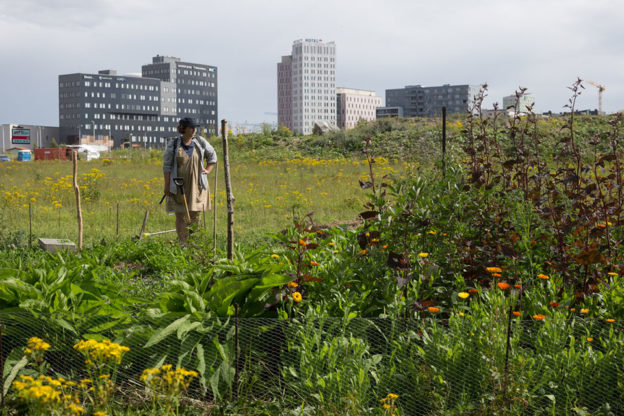
Cluster growing
Cluster and one of its caretakers and gardeners, Johnie Ekman.
It has been two month since Malin Lobell and Mary Mattingly‘s project, Cluster – an edible forest edge –
has been planted. Johnie Ekman and Johanna Eriksson, practicants from Holma folkhögskola’s course in Agroforestry/ permaculture have been doing amazing work ensuring the garden has been maintained, and the Cluster garden is now well established in the landscape.
Are you interested to get involved and work towards keeping the Cluster edible forest garden on site permanently? Making it into Hyllie’s future food-park?
Please contact: Malin Lobell < info AT malinlobell.se > or Johnie Ekman < johnieekman AT gmail.com >
photos: Johnie Ekman and Malin Lobell

The Mobile Sausage Factory visited Hyllie
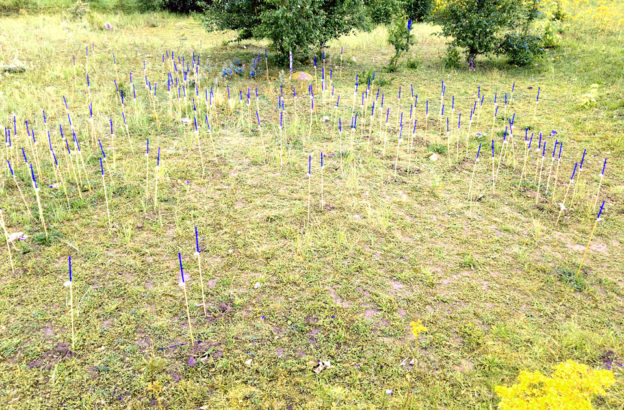
Thoughts on Vague Meadow
Notions about place inform my ongoing work with Vague Meadow. I’m trying to think about place as dystopia. That is, at the brink of anthropocen (www.theguardian.com/world/2017/jun/15/timothy-morton-anthropocene-philosopher ), I ask if we still can think or rethink places (people) in idealistic terms, as utopia? All places are more or less dystopian, more or less bad. That make them political. They can be good for some and bad for someone else at the same time. And they can be improved. Or maybe we lack terms for places in a new geological era? We now know that agriculture produce extended soil erosion globally. Oceans turn sour and many species are deracinated.
Our temporary knowledge tells us that the place in Hyllie (the recessed area) is 5000 years old, in the holocen era. Back to when people started to grow land in Skåne. Erik Sanner has noted that the top soil layer at Hyllie, the most fertile ground in Sweden, was sold many years ago (agrikultura.triennal.se/sv/martian-neighborhood-hyllie/ ). Geology as commodity, anthropocen logic, in which human impact can be traced to every inch of the globe.
More to come…
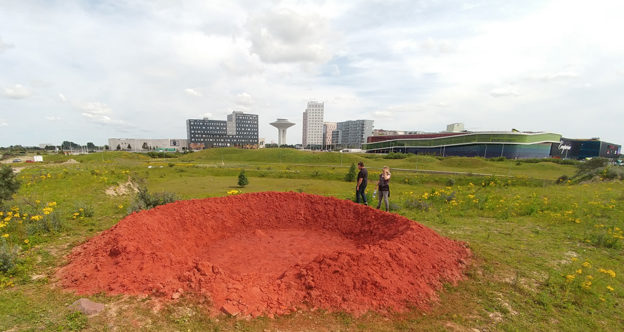
Martian Neighborhood Hyllie
At the center of most European villages is a church or a castle. In Hyllie, the first structure was the spaceship. The hotels, malls, condos and office buildings came later. This is how Martian towns will develop, where the oldest structures will be vessels which have landed.
Topsoil is a valuable commodity, and the topsoil in Hyllie was stripped away and sold many years ago. The earth in the southern part of Sweden is among the most fertile ground in all of Europe, yet Hyllie’s land is not hospitable. To some extent it has been marsformed already, the opposite of terraforming.
In Hyllie as you observe the landscape from the Martian crater, you see very few people. You might see someone on the bicycle path, or other visitors to Agrikultura, but otherwise it looks uninhabited. Yet there is a sizeable population in the neighborhood. Where are they all? Inside the mall, or the office buildings, or the hotels, where the windows don’t open, sealed environments in which the air temperature is controlled by computers, and machines are constantly circulating the air with sophisticated pumping mechanisms.
In Hyllie, people are already living as if they are on Mars.
Preparations for the Field Walk I, II and III

Collaborative Possibilities
A workshop can be anything. Modes of communication and expression do not need to be predetermined. Silence, speech, listening, thought, action… Our phones are pocket television studios, our movements can be choreography, our voices can be music, our words can be stories.
The color of Mars is caused by iron oxide. At the Martian Crater, the authentic iron oxide began to puddle as a result of Earth rain. It looks like wine, red wine, someone said. Let’s take off our shoes and stomp in the mud as if we were crushing grapes.
We performed an ancient ritual in an absurd environment. As people choose which elements of our existing cultures can be taken to Mars and should be taken to Mars, it is possible that some forms will become divorced from their original function or meaning. Wine-making may become puddle-stomping. In the slow pace of the lower Martian gravity, in a sealed environment where all water is recycled, in soil where grapes have never been planted, a traditional functional act becomes a purely aesthetic movement.
Location id: HoME performance
What’s going on at The Ark of Seeds
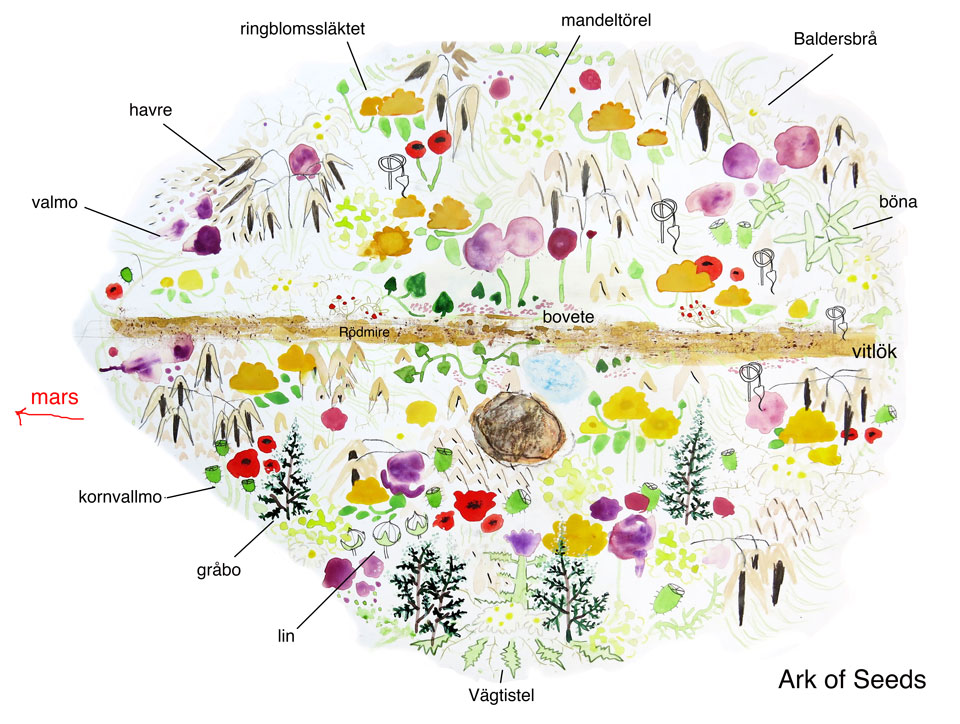
As part of Sophia Warsh‘s A Map of Edible Plants, she is documenting what is happening at all of the Agrikultura installations. Here is what she has found at Egle Oddo‘s Ark of Seeds:
Achillea millefolium
Allium sativum
Anagallis arvensis
Artemesia vulgaris
Avena sp.
Calendula
Cirsium vulgare
Eryngium maritimum
Euphorbia sp.
Fagopyrum esculentum
Lactuca serriola
Linum usitatissimum white form
Papaver sp.
Papaver rhoeas
Plantago lanceolata
Polygonaceae – vining
Trifolium campestre
Tripleurospermum maritimum
Vicia faba
The queen bee
The queen bee only sees daylight once in her life, the day she mates. Its a wild affair with multiple drones. The rest of her days, she lives in darkness. I image=ine, at times, she can see through a small hole in the hive, maybe a bit of sun and the horizon.
Here are large-format photos taken from a pinhole in an active beehive at the former landfill / future park of Hyllie in Sweden.
update on Hedgerow Hyllie
Hedgerow Hyllie: the spontaneous portion
what comes up
out of the gneiss and green stone
of the Fennoscandian Shield
or some rubble
a protective organism
this one borders the kiosk
magenta fireweed
and sea buckthorn,
grey green
not unlike the new color of
the hay bale covers
roots get scraped and berries collected
the sensor reads lonely
what does the one side think of the other side?
across the street is some mignonette
Mapping Agrikultura North
As part of Sophia Warsh‘s A Map of Edible Plants, she is mapping the Agrikultura installations. Here is what she has found at Gunnel Pettersson‘s Field Walks and Oliver Kelhammer‘s Neo-Eocene Malmö at Agrikultura North!
Input Performance
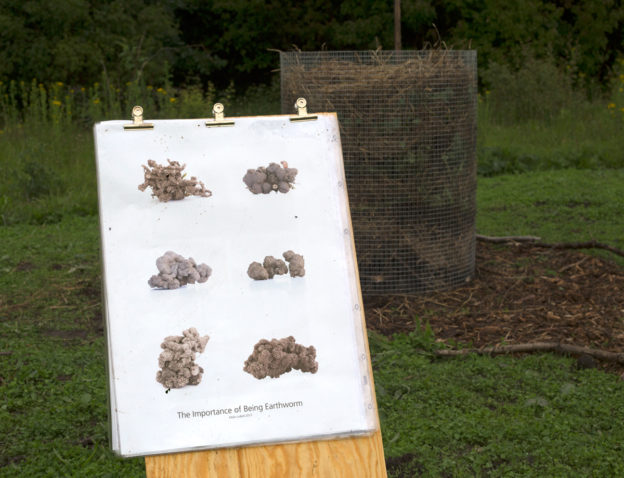
Feed the soil
The importance of soil. In David Montgomerys book ”Dirt- The erosion of civilisation” he writes about this important layer of top-soil as ”the skin of the earth”
On site there will now be two types of feeding the soil. One through three ”Worm towers” that will take care of the waste from AgriKulturas food events. And the other is a built compost pile built up in different layers of brown(carbon ) and green(nitrogen) and black (high nitrogen)material.

New plants in the ground
Yesterday I planted 45 more dandelions. www.700dandelions.bjornwangen.se

Dumpling Workshop 1
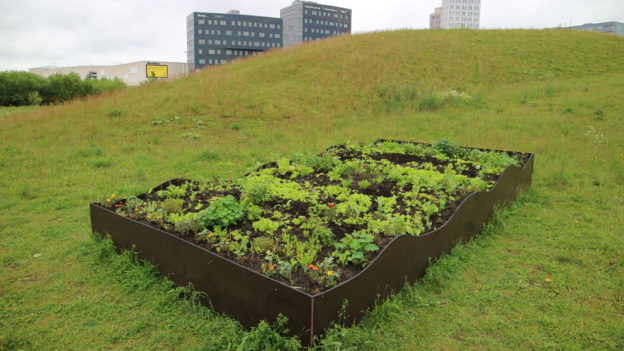
The Edible Carpet grows
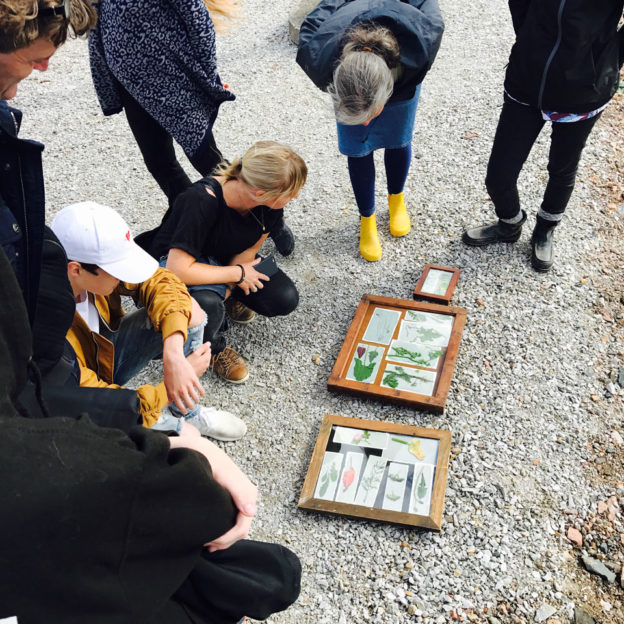
Cyanotype Workshops at Agrikultura
Farah ran a cyanotype workshop on opening weekend and it was a wonderful success. Each participant made unique and beautiful pieces they took home with them. Learning each step of the process by hand students will be able to do this process on their own again to continue making one-of-a-kind cyanotypes.
Participants got very creative with their selections of items to print and some even brought items from home we experimented with. Watching the image come up in the rinse going through each shade of blue right before our eyes feels like magic every time.
Farah will be teaching a second workshop when she returns for Stage Two of her project Agriphoto-Culturagraph so you can participate in this second one if you missed the first. Held from 13:00-17:00 on Saturday August 5th, please join for an educational and fun day of learning hands on how this photographic printing process dating back to 1842 works using the sun and water. All supplies and materials included, 150 KR cash to participate.
All welcome!
Installation of Orientation

OSS#HL Planting Event
On Saturday, July 1st OSS#HL Holma’s Healing Garden was planted during the launch of Agrikultura Triennial 2017. Självförvalting members, neighbors of Holma, and friends came to plant their plants, some transplanted from their own gardens, planting together this tribute to their 25+ years of self-organizing trough gardening.
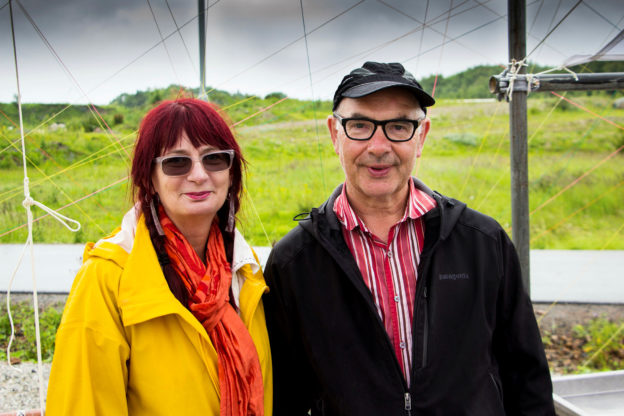
In the news
Press about Agrikultura:
Hyllie Local : Se Hyllies prunkande växtverk
Österlen magasinet : Familjeträd växer fram på Svabesholm
Expressen Kultur : Kommunal växtvärk i Malmös nya stadsdel
Vilks.net : Mer om vandaliserad konst, om landart och en omvärdering
SVT nyheter Skåne : Han ympar 40 skånska äppelsorter på ett träd
SVT Nyheter Skåne : Interview with Sam Van Aken
Sydsvenskan Kultur : Konsten slår rot på Hyllie
Sydsvenskan : Ätbar konst planteras i Hyllie
Skånska Dagbladet : Mat möter konst i Hyllie
Hyllie Local : Agrikultura – grön konst med naturlig drivkraft
Malmö stad press release : Agrikultura – konstevenemang med växtkraft
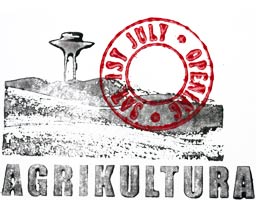


































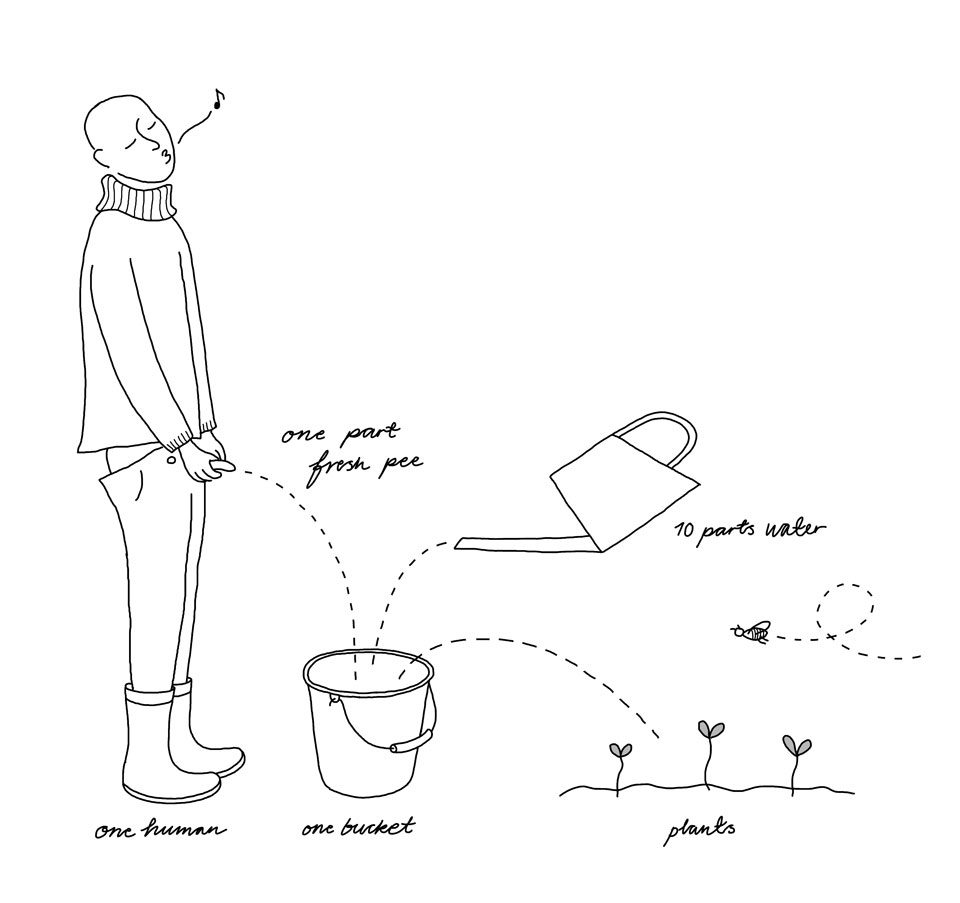



































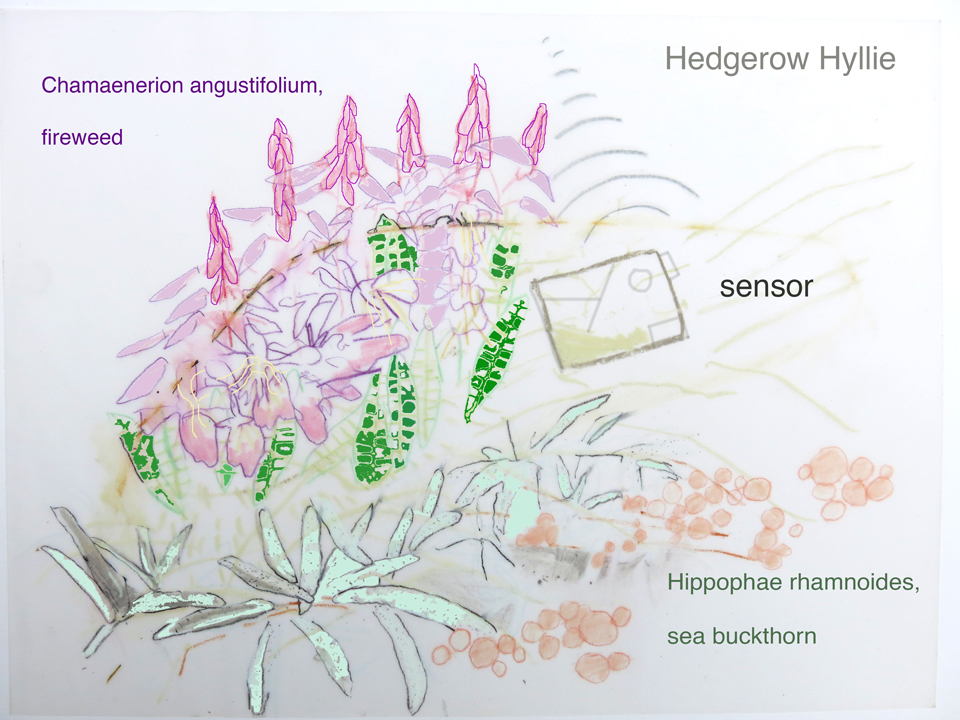
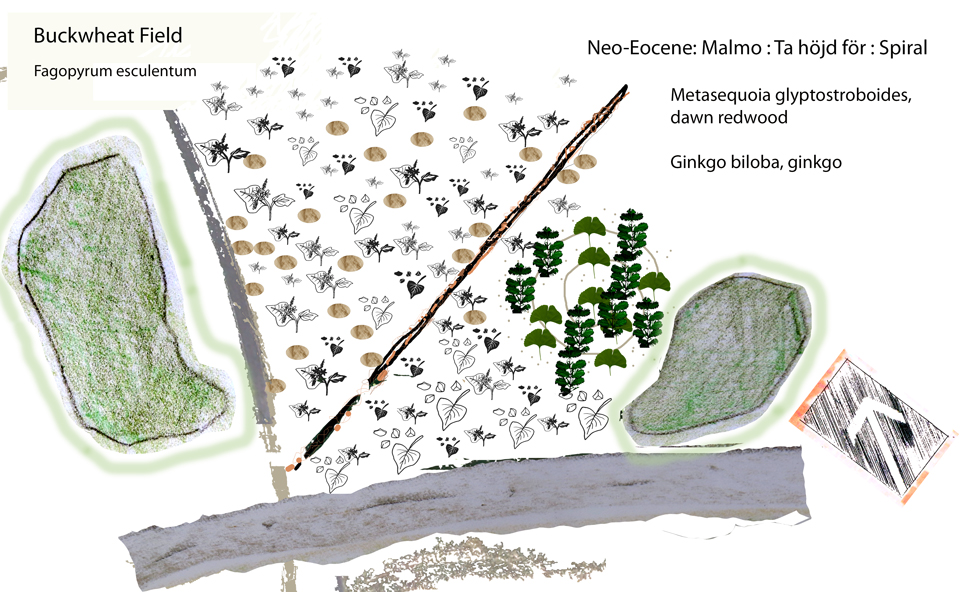

































You must be logged in to post a comment.